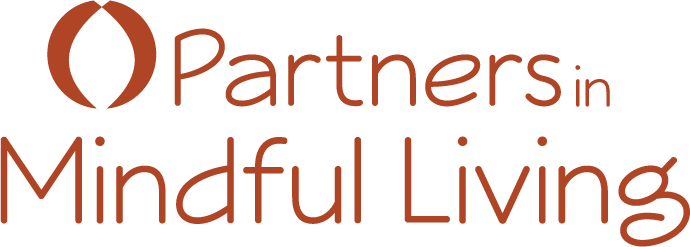
September 19, 2020
This post was originally posted in early 2017. I moved last weekend and rather than skip a publication date, I updated this post that seemed to be a favorite. Hope that you enjoy it.
If you want to reduce your suffering, change your relationship to pain.
The idea is that by changing your perspective — your thoughts and attitudes about pain — you can change how you experience it.
Sounds crazy. Pain is pain.
But is it?
We usually think of pain as an unpleasant sensation that can range from mild, localized physical discomfort to agony.
But pain is not just an expression of physical discomfort. It also has intellectual and emotional components.
Physical pain is the result of nerve stimulation, but there is an intellectual part that comes from our thoughts about it. The emotional part is the combined result of our ideas about the physical sensations and the sensations themselves.
Years ago, as a Buddhist and a meditator, I had been playing around with the idea of bringing curiosity to things I resisted. I decided to try it one morning when I had a migraine headache. The headaches had been increasing in quantity and intensity. My usual pattern was to put off meditation until the headache subsided. This time, I meditated in spite of it. My theory was if I could replace some of my resistance with curiosity, I might reduce the discomfort. I had nothing to lose.
The trick was to change how I was labeling discomfort. Instead of calling it pain — which implied something torturous — I referred to it as sensations. That was when I experienced a shift.
You’re probably familiar with the idea that whatever you resist, persists. When I’m in resistance to anything, my body tenses up, and my breathing becomes shallow. As soon as those two things happen, my discomfort ratchets up, whether I’m aware of it or not.
So I breathed all the way out and softened my body, leaning into the sensations that were happening in my head behind my eyes. I took my time exploring them, periodically checking in to make sure I was breathing out fully and keeping my body soft.
Almost immediately, I noticed the sensations weren’t as constant or rigid as I previously thought. They shifted a bit from one place in my head to another, increasing and decreasing in pressure from side to side, back and forth. When that happened, the texture of the sensations seemed to change as well. They were denser in some areas than others. At times, what felt warm or hot a moment earlier felt a bit cooler. I tried to visualize the color of the sensations. They seemed to shift between dark black to light grey.
I moved from resisting and hating something to feeling fascinated by how different the sensations were when I was observing and experiencing them, rather than thinking about them.
After about thirty minutes, the sensations subsided, and I was left with a dull remnant of having had a migraine. That was the last migraine I experienced. I have had mild headaches over the years, but no more migraines. I think migraines are caused by a variety of conditions, so I am not suggesting that everyone should be able to get rid of migraines with meditation or non-resistance. My headaches were the result of stress, not a physical or genetic condition.
The most important outcome was watching the idea move from being an intellectual construct to something I thought I might be able to apply in my life off the cushion.
I started playing around with applying the same principle to a straightforward, low-risk challenge. Instead of waiting for a headache, I waited for an itch. Usually, when I have an itch, I have the idea and the feeling that I must scratch it. I’ve had hives, so I know about itching!
I was meditating, and my nose started itching. Instead of calling it an itch, I called it a sensation, leaned into it rather than resisting it or scratching it, and explored how it felt. I breathed all the way out and softened my body.
The itch disappeared almost as soon as it arrived. But that’s not always the case. Sometimes it gets more intense until I decide to scratch. Sometimes I wait it out. My intention is to be mindful of it, whatever I do. Scratch it or don’t scratch it; it doesn’t matter.
If you decide to play with this challenge, play is the operative word. As soon as you notice an itch, turn toward the sensations and experience their texture, density, and color, and pay attention to your thoughts and any feelings that show up.
Don’t worry — it doesn’t matter if you scratch it or not. Whatever you do, do it mindfully. Make it a conscious choice rather than an automatic reaction.
I just had an itch above my right eye and automatically started to raise my hand to scratch it. I stopped, breathed out, softened, and just observed it until I decided to come back to writing, and now the sensation is gone.
Whatever the pain or discomfort, see what happens when you call it a sensation and bring some curiosity into the mix.
Much love,

Robyn, You make an insightful observation. I have also experienced this and use your technique often..but I am reminded of it by your posting this today, as it is easy to focus on the sensation and assign it old, inaccurate labels and takes mindfulness to practice a new approach.
You may remember how I was suffering extreme pain in my neck, shoulders, and right hip several years ago.
I first noticed a sharp pain about 2015 on our trip to Australia. While there I consulted a highly recommended massage therapist, who worked deeply (ouch) on that area and within 2-3 days the pain disappeared. It was only temporary, as the real cause was a deteriorating hip (socket and ball), eventually culminating (by the time of accurate medical diagnosis; an X-ray) in July of 2017 in a totally destroyed hip, literally bone on bone, flat as a pancake.
However, between those two dates, I experienced increasing discomfort, and more severe pains, as well as a dispersing of the pain to other regions of my body, particularly my neck and shoulders.
My friend heard me complain of it, and he referred be to Dr. John Sarno’s book, “Healing Back Pain.”
Dr. Sarno’s work was summed up himself by saying to a patient, and protege’, “Feel the feelings, or suffer the symptoms.” I subsequently was referred to this protege’, who counselled me over the phone from New York City, allowing me to call him day or night, if need be. His session walked me through deep psychological work on my underlying, suppressed emotions, in particular, RAGE.
One evening, at 2 AM pacific time the pain was so severe I could not sleep, was in agony as never before experienced (including many sports injuries and broken bones). I literally was crying the pain was so intense and unrelenting.
I called him, he answered and his words included: “What we resist, persists”,: and he encouraged me to let myself really feel the pain, get inside it, accept it, and as you shared Robyn, see it, taste it, hear it, and stop fighting it. His words, which have become a mantra for me, “Observe without judgment, accept without resistance, and surrender.)
Immediately the pain began to subside, and within maybe 10-15 minutes I was fast asleep, and slept soundly through the night.
Shortly thereafter the pain in my hip returned, and Vicki and I decided to get another orthopedic surgeon’s opinion. I had an orthopedic surgeon see me a couple years earlier when the pains first began, and he never mentioned an X-ray, but prescribed cortisone shots in my spinal area. I refused t hose as I wanted to further investigate, and get a second opinion.
While waiting to see my “second opinion” surgeon, he told the nurse to X-ray my hip before I came in to see him.
We both looked at the X-ray and he asked if I wanted my hip replaced. Ya think!? Like I said, no ball joint or socket cup visible, but femur welded to the pelvis.
Although a more timely diagnosis, including an X-ray, may have shortened my suffering, over time, I was able to release my resentments, and learn many lessons that I might never have learned without suffering.
I know this account was long but there are several things you and your readers may find interesting and helpful in my story. I am still learning from my hip experience.
I am also reminded daily of how wonderful it is to be pain-free. I am very grateful for everything that has occurred in my first 73 years..
Thanks Dick. I’m with you – our minds are magical and powerful.
So glad you’re pain free!
This is a gem!
Thanks Mary Lou – I hope it proves useful :-).